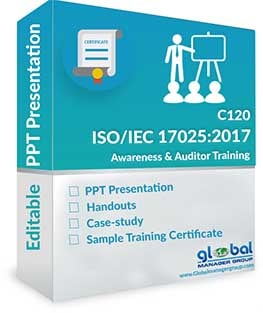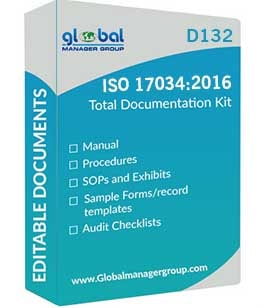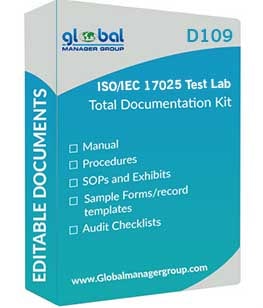 HARO Backlinks – Get Cited Like a Pro in Top Media!
HARO Backlinks – Get Cited Like a Pro in Top Media!
Understanding ISO 13485 Documents: Essential Requirements and Benefits
Written by John » Updated on: June 17th, 2025

In the medical device industry, compliance with international quality standards is crucial to ensure the safety, effectiveness, and reliability of products. ISO 13485:2016 is the globally recognized standard for quality management systems (QMS) specifically designed for medical device manufacturers and related organizations. It provides a framework for organizations to establish, implement, and maintain a robust QMS that meets both customer expectations and regulatory requirements.
Achieving ISO 13485 certification requires organizations to develop well-documented processes that demonstrate compliance with regulatory and customer needs. These documents include the ISO 13485 manual, standard operating procedures (SOPs), and ISO 13485 procedures, all of which play a vital role in ensuring quality control, traceability, and continuous improvement.
What Are ISO 13485 Documents?
ISO 13485 documents form the foundation of a compliant quality management system, helping organizations maintain consistency, ensure regulatory adherence, and facilitate efficient operations. These essential documents typically include:
ISO 13485 Manual: A structured document outlining the quality management system, including policies, quality objectives, roles, and responsibilities within the organization.
ISO 13485 SOPs: Step-by-step instructions that provide detailed guidance on critical processes such as manufacturing, testing, document control, supplier management, and employee training.
ISO 13485 Procedures: These define how specific ISO 13485 requirements are implemented, covering areas such as risk management, corrective and preventive actions, internal audits, and non-conformance handling.
ISO 13485 Audit Checklist: A structured evaluation tool that helps organizations assess their compliance with ISO 13485 requirements, including document control, training records, risk management, and customer feedback.
Key Requirements of ISO 13485 Certification
To comply with ISO 13485:2016, organizations must fulfill several critical requirements, which include:
Risk-Based Approach: Organizations must implement a risk management process to identify, assess, and mitigate risks associated with medical device production and use.
Control of Outsourced Processes: Companies must establish written quality agreements with suppliers and service providers to ensure that outsourced activities meet ISO 13485 standards.
Medical Device File: Maintaining a comprehensive medical device file that includes design specifications, manufacturing processes, and performance validation records.
Work Environment Monitoring: Ensuring that environmental factors, such as contamination control and sterilization, are managed to maintain product safety and integrity.
Product Realization: Defining the entire product lifecycle, from design and development to production, distribution, and post-market activities.
Complaint Handling and Feedback: Establishing a systematic approach to collecting, analyzing, and addressing customer complaints to improve product quality and safety.
Regulatory Notifications: Implementing procedures for reporting adverse events, recalls, and product failures to regulatory authorities in compliance with regional and international laws.
Benefits of ISO 13485 Certification
Obtaining ISO 13485 certification offers numerous advantages for medical device manufacturers, including:
Enhanced Customer Satisfaction
ISO 13485 ensures that medical devices consistently meet customer expectations in terms of quality, performance, and safety, leading to greater customer trust and satisfaction.
Reduced Operating Costs
A well-structured QMS enhances process efficiency, minimizes waste, reduces errors, and ultimately lowers operational costs through improved resource management.
Legal and Regulatory Compliance
Compliance with ISO 13485 helps organizations meet global regulatory requirements, reducing the risk of non-conformance, legal penalties, and costly product recalls.
Stronger Market Credibility
ISO 13485 certification demonstrates a company’s commitment to quality and regulatory compliance, making it easier to enter new markets, win contracts, and establish trust with stakeholders.
Maintaining comprehensive ISO 13485 documentation, including manuals, SOPs, procedures, and audit checklists, is essential for achieving and sustaining compliance with ISO 13485:2016. A well-implemented quality management system not only enhances product quality and reduces risks but also ensures that organizations meet both customer and regulatory expectations.
Achieving ISO 13485 certification is more than just a compliance requirement—it is a strategic decision that strengthens operational efficiency, improves product reliability, and enhances market credibility, positioning businesses for long-term success in the medical device industry.
For more information, please check out this: ISO 13485 Documentation
Note: IndiBlogHub features both user-submitted and editorial content. We do not verify third-party contributions. Read our Disclaimer and Privacy Policyfor details.
Copyright © 2019-2025 IndiBlogHub.com. All rights reserved. Hosted on DigitalOcean for fast, reliable performance.















